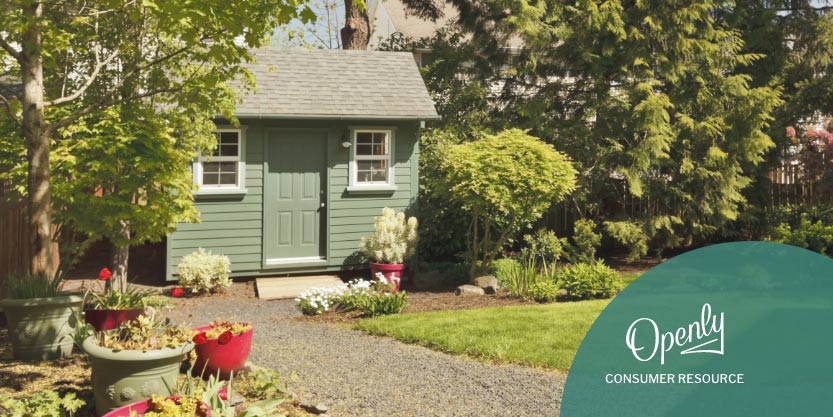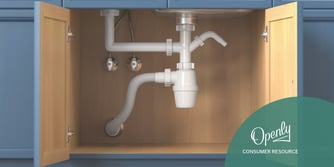It’s natural for homeowners to primarily focus on protecting their main dwelling when it comes to obtaining a homeowners insurance policy. After all, it's where the majority of one’s personal belongings are stored and protects the household from the elements. However, your property may include Other Structures that also require attention and coverage.
Keep reading to dive deeper into Other Structures coverage and how to determine adequate protection.
- Other Structures coverage ensures that structures on the property (beyond your main dwelling) are protected against damage or loss.
- Consider replacement cost, market value, construction materials, and unique features when determining coverage limits.
- Modifications to a property can impact coverage needs. Work with your insurance agent to ensure your policy reflects your current situation.
Understanding Other Structures coverage
Other Structures coverage, otherwise known as Coverage B, is a significant part of homeowners insurance policies. It provides financial protection for structures on your property that are separate from your main dwelling (i.e. not attached). The purpose of Other Structures insurance is to provide protection if these Other Structures are damaged or destroyed due to a covered peril.
Why do you need Other Structures coverage?
Other Structures on your property are susceptible to a range of risks and could be damaged or destroyed due to theft, fire, severe weather events, or accidents, among other risks. For example, a detached garage could be damaged by a fallen tree during a storm, or a shed might be destroyed by a fire.
Without proper coverage, the financial burden of repairing or rebuilding the damaged shed (or any other structure on your property) could be overwhelming. And the cost of materials, labor, and permits can quickly add up. Having Other Structures coverage in place allows you to transfer the financial risk to your insurance provider and to focus on rebuilding.
What does Other Structures coverage include?
Other Structures coverage applies to the structures on the homeowner’s property that are not connected to the main dwelling.
Other Structures covered under Coverage B include:
- Detached garages
- Sheds and workshops
- Barns
- Gazebos
- Fences
- Guest houses
Covered perils and limitations
Other Structures coverage typically includes protection against common perils, such as fire, lightning, windstorm, hail, theft, and vandalism. These covered perils are often similar, if not identical, to those covered for your main dwelling under Coverage A. However, it’s important to review your specific policy to understand the perils covered, and any limitations or exclusions, that may apply, such as caps on coverage amounts and deductibles.
And like dwelling coverage, Coverage B does not protect against perils like flooding, earthquakes, and general wear-and-tear. (For flood protection, consider a standalone flood insurance policy or participate in the National Flood Insurance Program.)
Additionally, Other Structures coverage does not cover liability claims. That means that if you have a swimming pool on your property, while damage to the pool may be covered by your policy, liability claims will be subject to the limitations outlined in your specific policy, under personal liability coverage, or Coverage E.
Determining coverage limits
Coverage limits for Other Structures are typically determined as a percentage of the dwelling coverage limit in your homeowners' insurance policy. Most insurance companies set the percentage at 10% of the dwelling limit, for all Other Structures combined.1 This means that if the dwelling is insured for $700,000, Other Structures coverage would be capped at $70,000 on your homeowners policy.
However, if your $700,000 property contains a number of Other Structures that would cost more than $70,000 to rebuild or repair, there are additional coverage options available to increase your Coverage B limits. For instance, Openly offers customizable Other Structures coverage that can be tailored to the value of the structures on your property.
Assessing the replacement cost or market value
To determine whether or not you have adequate coverage, it's important to accurately assess the value of your Other Structures. This involves evaluating their replacement cost. Replacement cost refers to the amount it would take to rebuild the structure from scratch, taking into account current construction and labor costs.
To determine the value, consider factors such as the age, size, materials used, and any unique features or customization of each structure. Then total up the replacement value of all Other Structures. This is how much it would cost to repair or repair the Other Structures on your property in the event of a loss.
If this seems too daunting a task, consider hiring a professional appraiser or consulting with a contractor to help determine an accurate value.
Other Structures coverage: key considerations
One in 20 homes has a claim every year.2 And the more structures on your property, the higher the likelihood you will find yourself filing a claim at some point. Of course, this all depends on a number of factors, ranging from the region your home is located in and the propensity for extreme weather, to the age and materials used when the structure was constructed.
When purchasing an insurance policy, consider the following to ensure you select the appropriate coverage for your property:
- The geographical location of your property can influence risks, such as high winds, floods, or wildfires, so be sure to consider any unique risks associated with your location.
- The materials and construction methods used in your structures impact their vulnerability to different perils.
- The purpose for which you use each structure can impact the coverage needed. Be sure to inform your insurance provider of any commercial or rental usage.
Reviewing and updating your coverage
Regularly reviewing your homeowners insurance policy, including your Other Structures coverage, is essential. Life changes, property renovations, or additions and subtractions of structures can all affect your coverage needs. Review your policy annually or when significant changes occur on your property.
To update your coverage, contact your insurance agent. Provide them with accurate information about your structures, including any changes made to your property. They can guide you through the process of adjusting your coverage limits and ensure that your policy reflects your current needs.
Importance of Other Structures coverage
Other Structures coverage extends the protection of your homeowners' insurance policy beyond your main dwelling, encompassing structures and outdoor fixtures on your property.
With the cost of goods and services trending upward, it’s essential to understand the scope of your specific Other Structures coverage, to accurately assess the value of your Other Structures, and to review (and update) your coverage regularly.
Take the necessary steps today to ensure that all structures on your property are safeguarded with Other Structures coverage.
*We provide this information to help you understand insurance. Any coverage is subject to the terms of your policy. Please refer to your policy and declaration page for complete coverage details.
1 Irmi. “Other Structures.” http://www.irmi.com/term/insurnace-definitions/other-structures
2 Insurance Information Institute. “Facts + Statistics: Homeowners and renters insurance.” Published 23 June 2023. Accessed 6 July 2023. https://www.iii.org/fact-statistic/facts-statistics-homeowners-and-renters-insurance




